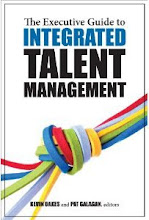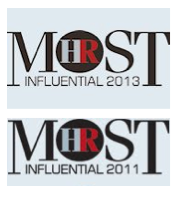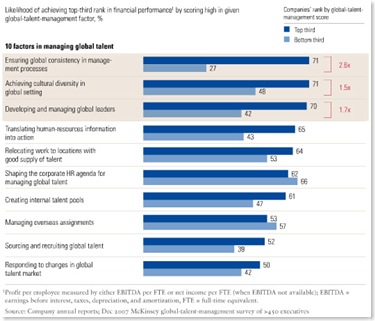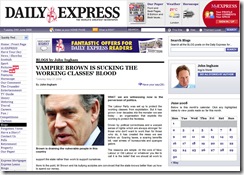"Toyota has found that a practical way to achieve the impossible is to think deeply but take small steps—and never give up. It first breaks down a big goal into manageable challenges. Then it experiments to come up with new initiatives and processes for handling the more difficult components of each challenge. This pragmatic approach to innovation yields numerous learning opportunities. Consider, for instance, Toyota’s path for developing the Prius. In 1993, the company decided to develop a car that would be environmentally friendly and easy to use. The development team, called G21, first came up with a car that delivered a 50% improvement in fuel efficiency. Toyota’s senior executives rejected the prototype and demanded a 100% improvement. That was unachievable using even the most advanced gasoline and diesel engines or even fuel cell technology–based engines. The G21 team had no choice but to tap a hybrid technology that one of the company’s laboratories was developing. Sure enough, the first engine wouldn’t start. When a subsequent model did, the prototype moved only a few hundred yards down the test track before coming to a dead halt. In later models, the battery pack shut down whenever it became too hot or cold. Despite these setbacks, Toyota didn’t stop working on the project and unveiled a hybrid concept car at the 1995 Tokyo Motor Show. Its executives knew that alternative power train technologies were emerging, but the fact that the Prius would be an interim solution didn’t deter them. They believed the project was worth the investment because Toyota would learn a lot in the process."
In addition, Toyota “encourages employees to be forthcoming about the mistakes they make or the problems they face. By encouraging open communication as a core value for decades (see below), Toyota has made its culture remarkable tolerant of failure”.
Developing individual human capital.
Toyota views employees not just as a pair of hands but as knowledge workers who accumulate
chie – the wisdom of experience – on the company’s front lines:
“Toyota prefers on-the-job training to off-the-job programs. During their initial training, employees are given the freedom to make judgment calls. They have to adhere to a broad set of guidelines rather than follow a strict set of rules. The company adds more context to employees’ perspectives by asking them to think as if they were two levels higher in the organization. Toyota trains employees in problem-solving methods during their first 10 years with the company. Another feature of its people management policies is the role exemplary employees play as mentors. They shoulder the responsibility of developing a cadre of managers who learn through experimentation, and pass on Toyota’s values by sharing personal experiences—a modern-day apprenticeship system.
When Toyota evaluates managers, it usually emphasizes process performance and learning over results. The company looks at how managers achieved their goals; how they handled issues; how they fostered organizational skills; and how they developed, motivated, and empowered people. The company uses five kinds of criteria, all of which are fuzzy and subjective. For instance, one category it employs is personal magnetism (
jinbo), which captures how much trust and respect the manager has earned from others. Jinbo is a vague criterion that is open to interpretation and impossible to quantify; you can evaluate people on it only if you have worked closely with them. Another quintessentially Toyota measure of manager performance is persistence or resilience. The company sees this as part of its DNA, describing it as
nebari tsuyosa, which translates, literally, as adhesive strength.”
An emphasis on teams over individuals (“Toyota places humans, not machines, at the centre of the company”)
But this is not a place for independent stars:
“By any standard, the company pays executives very little. In 2005, Toyota’s top executives earned only one-tenth as much as Ford’s. Their compensation was lower than that of their counterparts at the 10 largest automobile companies, save Honda. Toyota managers also rise through the hierarchy slowly: In 2006, the company’s executive vice presidents were on average 61 years old—close to the retirement age at many non-Japanese companies.
Toyota rarely weeds out underperformers, focusing instead on upgrading their capabilities. In fact, Toyota is still committed to long-term employment—as all Japanese companies once were. During the 1997 Asian financial crisis, for instance, Toyota’s Thailand operation weathered four straight years of losses with no job cuts. The order had come down from then president Hiroshi Okuda: “Cut all costs, but don’t touch any people.” In August 1998, Moody’s lowered Toyota’s credit rating from AAA to AA1, citing the guarantee of lifetime employment. Even though the downgrade increased Toyota’s interest payments by $220 million a year, company executives told the rating agency that it would not abandon its commitment.”
Toyota does have a strict hierarchy but it enables employees to push back against senior managers:
“Voicing contrarian opinions, exposing problems, not blindly following bosses’ orders – these are all permissible employee behaviours…Toyota’s communication system works because the organization is open to criticism. Employees feel safe, even empowered, to voice contrary opinions and contradict superiors. Each individual in Toyota is expected to act according to what he or she thinks is right. Every employee enjoys the prerogative to ignore the boss’s orders or not take them too seriously. Confronting your boss is acceptable; bringing bad news to the boss is encouraged; and ignoring the boss is often excused. In many of our interviews, employees told us how local operations had succeeded by refusing to obey orders or ignoring what headquarters had advised.”
A huge investment of time, money and energy in connecting, teaming and open communication“Information flows freely up and down the hierarchy and across functional and seniority levels, extending outside the organization to suppliers, customers, and dealers… Senior sales people share information with dealers and learn about customer tastes by visiting them.
Even in a Toyota plant, executives deliver and receive information by going to the front lines in person. For instance, the head of the Takaoka and Tsutsumi plants, Takahiro Fujioka, is on the factory floor every day and joins workers for drinks in the evening (
nomikai) sometimes as often as four times a week [of course, there are some
major disadvantages in this approach too!].
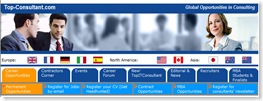 Tony Restell at Top Consultant asked for a chance to respond to my slightly less than overwhelmed response to their recent virtual careers fair.
Tony Restell at Top Consultant asked for a chance to respond to my slightly less than overwhelmed response to their recent virtual careers fair.




